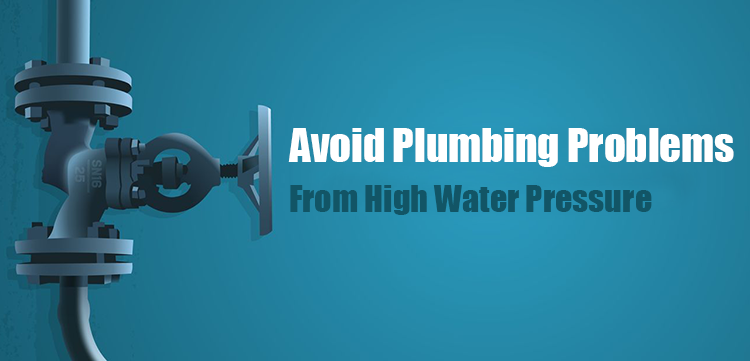It is every homeowner’s nightmare. You come home from vacation or a long day at work to find a flood in your house! A pipe has broken or a waterline in your home as blown, letting water run freely at normal pressure.
You might think it was due to an old or faulty plumbing fixture like a faucet or a flexible toilet line. But what caused that to break in the first place? One factor that is often overlooked is the water pressure to the home.
What is water pressure?
Water pressure is the amount of force from the water flowing into your home. Water pressure is measured in “pounds per square inch”, more commonly referred to as “psi”. The higher the psi, the faster and harder the water is traveling through your pipes and fixtures.
Why is water pressure different by location?
Water pressure often varies between homes. The closer your home is to the source of the water – say a water tower, for example – the higher your water pressure will be. The water from that tower needs to reach all of the homes and businesses it serves, so the water pressure needs to be strong enough to reach the farthest building. The result is that homes near the water tower may have a high psi while homes far from the water tower may have a low psi.
What is a safe water pressure range?
In order for you to have all of the water you need, a minimum psi of 50 is typical. It’s enough pressure to get the water from the source to the sink effectively without causing damage to your plumbing.
More is not better when it comes to water pressure. The highest water pressure that most houses can handle is typically 75 psi. If your water pressure is 80 psi or higher, the risk of something breaking goes up.
Water lines on toilets, water heaters, washing machine hoses and other fixtures are at risk of breaking under high pressure. Even the copper pipes under your home can wear down more quickly because of high pressure. All of these can cause significant water damage if broken, especially if you are not home. Water will flow at regular pressure until it is turned off. If you’re out of town or just gone for the day, water will run continually.
Manufacturers and insurance companies know that products can’t stand up under a pressure higher than 80 psi. Water pressure of 80 psi or greater voids most warranties on water using appliances and fixtures. Also, in many cases, your insurance company may not cover water damage claims if the damage was caused by high water pressure. It’s the homeowner’s responsibility to get the water pressure checked.
How do I find out what my water pressure is?
It is uncommon for homes to have a water pressure gauge connected to the plumbing system. To test the pressure, a gauge must be connected to a fixture such as an exterior faucet and pressurized. Most licensed plumbers have the ability to test your pressure.
Water pressure often changes during the day. It’s usually lower in the morning and in the evening because more people are home and are using their water. It’s typically highest around the middle of the day when most folks are at work. This is also why lots of water disasters happen when you’re not home.
If at any point during the day your gauge reads higher than 80 psi, you are at risk of damage from water leaks.
What should I do if my water pressure is 80 psi or greater?
Thankfully, there is a solution to the high water pressure situation. A Pressure Regulating Valve, called a PRV, will take care of the issue. It is a device that is placed between the main water source and your home, usually near the main water shut off valve.
A PRV’s work is simple. It absorbs the full pressure of the water coming from the source and lowers it to a safe psi. No matter what the water pressure is on the other side of the PRV, your home and appliances will have a safe range of water pressure.
If your main shut off valve is easy to locate in your house, installing a PRV usually isn’t a major project. TLC’s experienced plumbers can help you find the best place and method to install the PRV. Please note, a PRV is not something you should install yourself. A licensed plumber will be familiar with your city’s water system and will know how to correctly install the valve.
How do I know if I already have a PRV?
If you don’t know whether or not your house has a PRV, chances are that it doesn’t. Water pressure readings outside the safe zone of 50 to 75 psi are also a sign that you don’t have one. Many homes, especially older homes, don’t have one. A plumbing professional can tell you for sure whether or not a PRV has been installed.
What’s the bottom line?
Nobody wants to come home to a major water disaster. And you don’t have to! By installing a Pressure Regulating Valve (PRV), you can avoid a plumbing disaster in the future and enjoy peace of mind. To learn more about how you can protect your plumbing, Ask A Pro or give us a call today! Currently servicing Albuquerque, Santa Fe, and the surrounding areas.
Interested in other ways to prevent and control plumbing disasters and water damage? Check out the following topics:
Why You Should Shut Off Your Water When Leaving Town for Vacation

